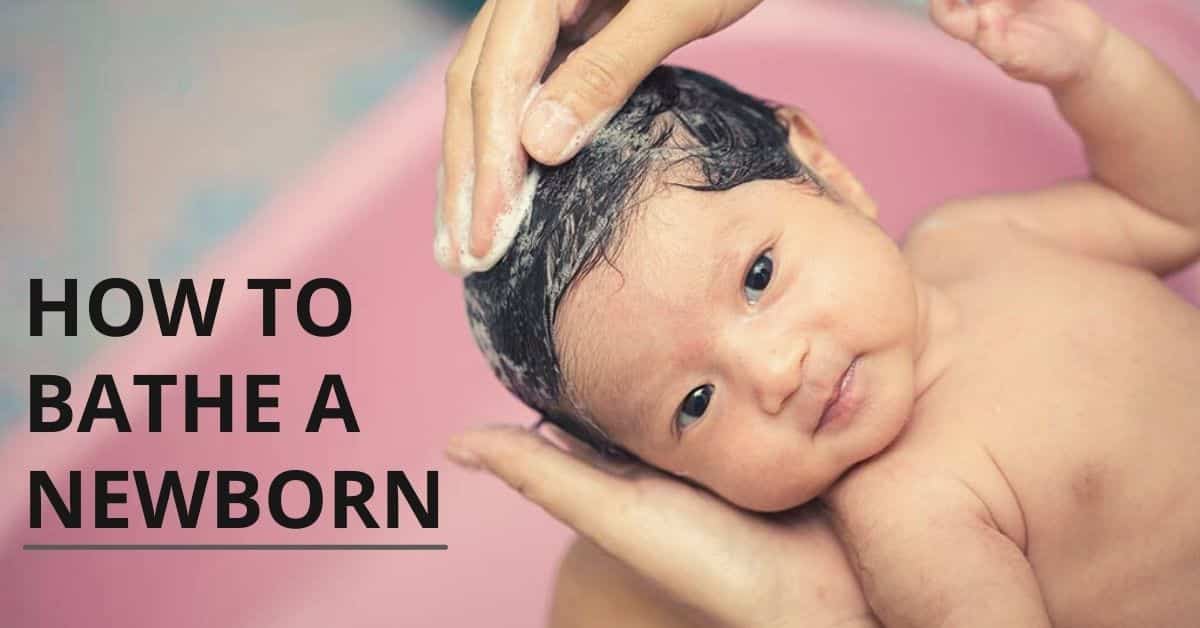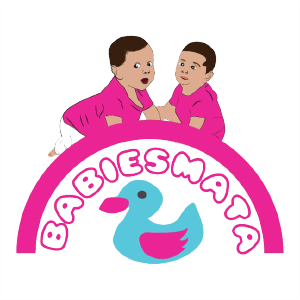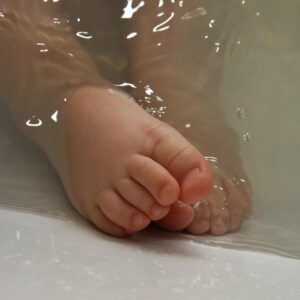How to Bathe Your Newborn

Not only is bathing your newborn an integral part of general hygiene, but it is also essential in terms of calming the muscles and joints of the baby\’s body. It\’s something you should add to your baby\’s routine shortly after your baby is born.
Although, baby health specialists suggest postponing the first bath for a baby till they are a few days old. That\’s because your baby is coated with a waxy protective skin covering (known as vernix) after birth that shields your baby from environmental germs……more like your \”baby\’s amour,\” cool, right??
If you gave birth to your baby in the hospital, after your baby is born, hospital nurses could clean up the amniotic fluid and blood. But if you choose, you\’ll have the choice of asking them to leave excess vernix. But once you take your baby home, after spending the appropriate time to heal at the hospital, you must sponge bath your baby. Contrary to popular opinion, bathing for a newborn baby is very simple; though it requires extreme caution, it\’s straightforward and direct.
You should clean the area around their head, body, and diaper. This is the best baby bath practice just before the umbilical cord comes off. For a better knowledge on how to bath newborns and a better understanding of bath time, let\’s proceed;
Preparing for your first baby bath;
For the first few weeks of life, your baby should be adequately bathed to ensure optimum hygiene and improve your baby\’s health. Bathing your baby properly also aids the umbilical cord\’s healing process and helps with the circumcision site (in the case of circumcised baby boys).
In most cases, a sponge bath is recommended for better wash up for your baby, as it is more effective in cleaning your baby\’s body. A sponge bath is also recommended if you want to wash one part or all of your baby\’s body without having them soaked wet. Ensure you have all the baby bath items you need within easy reach before giving your baby a sponge bath. To keep your baby cozy, you will also want to warm up the room. Some of the baby bath items you should stay close by are;
- Blanket or a Towel (for padding hard surfaces)
- A bowl of warm, not hot, water
- Washcloth
- Mild baby bath soap
- Mild baby bath sponge
- Clean diaper
- Baby towel
How to bath your newborn baby
- After getting the necessary baby bathing items ready, follow the below-highlighted steps on how to bath your newborn baby;
- Choose a warm room, around 23.8 ° C (75 ° F) for the bath, take away clothes and diapers from your baby, and wrap them in a towel.
- Place your child on a flat surface, like a floor, a changing table, a counter next to a sink, or a bed. Using a safety strap or hold them with one hand at all times to make sure they do not fall if your baby is off the ground.
- To reveal only the region of the body you\’re cleaning, unwrap the towel one section at a time. Begin with the face and the top of your baby\’s head: dip the clean cloth in the warm water first.
- To avoid getting soap in the eyes or mouth of your infant, use only warm water without soap for this phase. Wipe the outer ears, chin, neck folds, and eyes along the top of the head and around them.
- In the warm bath, apply a drop or two of soap. Dip the washcloth in and squeeze it out of the soapy water.
- Clean the rest of the body and diaper region with soapy water. You will want to thoroughly clean under the arms and around the genital area. Unless otherwise instructed by your baby\’s doctor, stop washing the penis to keep the wound dry if your baby has been circumcised.
- Dry your kid off, including drying between the folds of the skin. Put on a clean diaper for your baby. To keep your head warm when they are drying off, you can use a towel with a built-in cover.
- If you have a baby boy who has been circumcised, closely follow the doctor\’s instructions to keep the area clean or dry until the area has healed. It usually takes about a week for this to be healed.
Frequently Asked Questions
How do I bath my baby in a bathtub?
Once the umbilical cord comes off, and the circumcision spot heals completely, the bathtub bath is an effective means of keeping your baby hygienic and clean. The steps below can help serve as directions;
- With a small amount of water, fill the tub. Usually, 2 to 3 centimeters of water from the bottom of the tub is enough. Depending on the model you have, some tubs can be put in the sink or standard bathtub.
- Place your baby right in the water after undressing your baby so he/she doesn\’t get cold, using one hand to hold your baby\’s head and the other to bring their feet into the tub first. They should have their head and neck well above water at all times for protection.
- To keep them warm in the pool, you can splash or spill warm water over your baby gently.
- To cleanse their face and hair, use a washcloth and shampoo their scalp one to two days a week.
- Using warm water or a wet washcloth, wash the rest of the body from the top down.
- Lift your baby out gently and wipe it dry with a towel. Make sure to dry the creases in their skin as well.
Remember never to leave your baby, even for one second, unattended in a tub. They can easily drown, regardless of the quantity of water.
Do you need soap to bath your baby?
When bathing your newborn, you can use gentle baby soap or baby wash. Don\’t use the regular soaps as they can be too harsh for your baby\’s delicate skin. The skin of your newborn doesn\’t need moisturizer either.
How often should I bathe my newborn baby?
Whether you’re bathing your first baby or your last, you’re bound to have some newborn bathing concerns, the most pressing of which is how to keep your baby clean and how often you should bathe your baby. Although it has long been recommended that the baby be bathed as soon as possible after birth, newer research indicates that delaying the first bath may be beneficial.
What is the ideal water temperature for a baby bath?
The temperature of the water for bathing your baby should be warm, never hot; about 98.6° F (between 37 ° C and 38 ° C) is the optimal temperature. To track the temperature, you can use a bath thermometer or check the water with your wrist or elbow to ensure it\’s warm and not hot.
Also, check the tub or baby bath on different sides to ensure no hot spots. Turn on the cold water first and then the hot water to fill it, whether you use a tub or basin. You should also change the water heater if you live in a house to ensure it does not go over 120 ° F (48.8 ° C), which can badly scald the skin of your infant. When you live in an apartment complex or condo, you probably can\’t change the water heater.
Conclusion
Never at any point in time leave your baby unattended during bath. If your baby cries out or seems uncomfortable, ensure the room is warm at the right temperature and also check if the water is not hot. Be careful with bubble baths as too much can dry up the baby\’s skin. Bath toys can also help make your baby bath time fun; remember to include them in your list of baby bath items.







